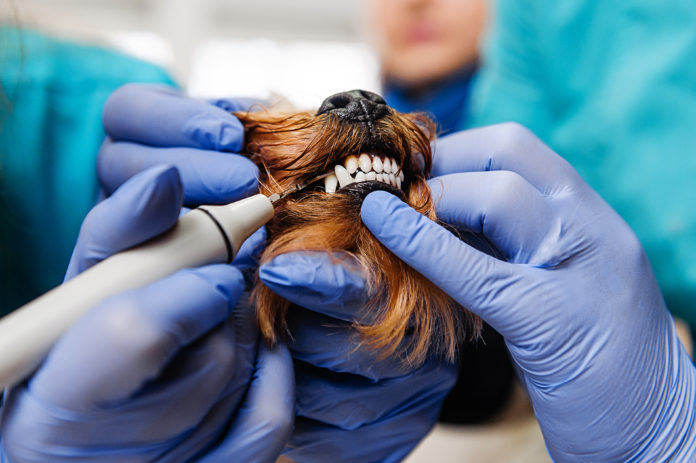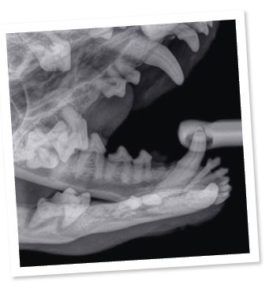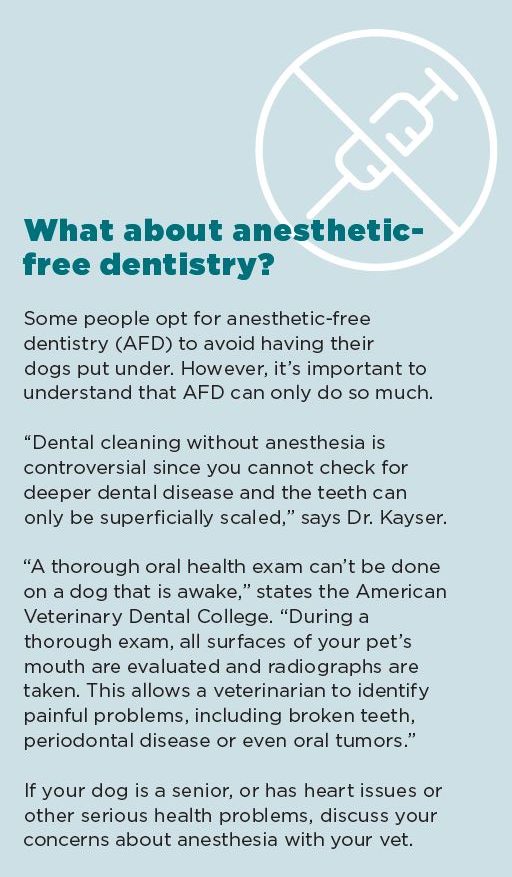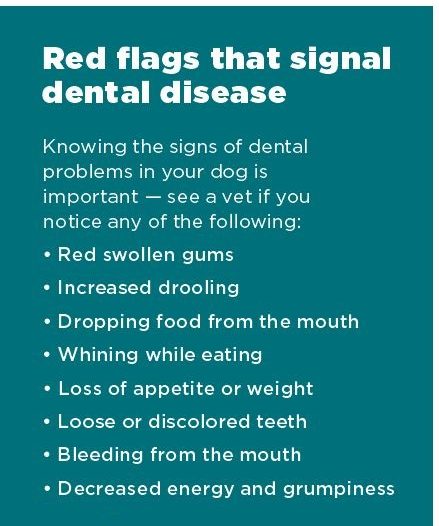Your dog’s dental exam

Our four-legged friends need oral care just like us, but do veterinary dental exams bear any similarities to ours? Here’s what happens when you drop your dog off for a dental.
Because periodontal disease is so common in dogs, regular dental exams are an important part of their care regimen. The American Animal Hospital Association recommends that dogs receive annual dental cleanings beginning at the age of one or two. My own dogs, now seniors, have had yearly dental exams since they were pups. But how exactly are these exams and cleanings done, and do vets use the same procedures and tools as human dentists do? Here’s what to expect when you take your own dog in for a dental exam.
What happens first?
A few weeks before your dog’s dental exam, your veterinarian should perform pre-anesthetic tests and examine him for any underlying disorders. This is very important because certain health problems could change the way in which the dental exam is done. For example, some drugs used for sedation make the kidneys work harder, so if your dog is discovered to have kidney disease, your vet will need to discuss the dental procedure with you so you can decide how to proceed. If your vet doesn’t recommend pre-anesthetic tests, ask her about them.
What happens on the day of the exam?
A dental exam begins with a comprehensive oral examination of your dog to evaluate the structures of his face, head and neck. Then, intraoral structures are examined, including teeth and soft tissues.
 Full mouth radiographs (x-rays) are also obtained. This is extremely important, as disease can easily be missed without examining beneath the gum margin (the border of the gingiva surrounding, but unattached to, the substance of the teeth). Multiple studies have shown significant diagnostic benefits in obtaining dental radiographs. Without these x-rays, you are only seeing approximately half the tooth structure.
Full mouth radiographs (x-rays) are also obtained. This is extremely important, as disease can easily be missed without examining beneath the gum margin (the border of the gingiva surrounding, but unattached to, the substance of the teeth). Multiple studies have shown significant diagnostic benefits in obtaining dental radiographs. Without these x-rays, you are only seeing approximately half the tooth structure.
Scaling and polishing are the most common dental cleaning procedures. After the x-rays are taken, while the dog is still under sedation (see below) special hand and ultrasonic scalers designed for animals (human scalers don’t work!) are used to remove the plaque and tartar above and below the gum line. The use of any instrument on tooth enamel will cause microscopic scratches to the surface that will ultimately damage the tooth surface, leading to further disease — this is the reason teeth are polished after removing tartar with dental instruments.
Is anesthesia absolutely necessary?
One of the most common reasons people avoid taking their dogs in for a dental exam is because they are anxious about the anesthesia. However, sedation or anesthesia is necessary for your veterinarian to make a comprehensive dental exam.
“Your veterinarian can often look in the mouth and decide if a more extensive dental exam is needed,” says integrative veterinarian, Dr. Nicole Kayser. “Unfortunately, sedation or anesthesia is needed to do a thorough dental exam, which will include radiographs to look at the tooth roots and surrounding bone, and dental probes to assess the pocket depth and look for any enamel damage. Unlike human dental exams, if a bad tooth is found upon examination it is usually dealt with at the same time, since the dog is already under anesthesia.”
What you may not know — but need to!
Oral exams also allow a veterinarian to identify painful problems, including broken teeth, periodontal disease, infections and abscesses, loose teeth or even oral tumors. If your dog is dropping food from his mouth or isn’t eating, it’s often due to discomfort. In some situations, however, you may not even know your dog is in pain. My doxie fractured his tooth when chewing on a bone and we had no idea until he went in for a routine dental exam. His pre-molar had to be removed.
When anything serious is found during a routine dental exam, your vet will talk to you about all the options. For example, if you have a dog that’s a powerful chewer, you could get a call from your vet about a fractured tooth while your dog is still sedated, so be prepared to discuss treatment scenarios. Whatever the problem, whether it’s a cracked tooth, an abscess or a tumor, there are lots of options for care. Dental veterinary specialists handle more difficult cases like root canals, while veterinary anesthesiologists are also available for dental procedures.
“As vigilant as you are with your dog’s dental health, it may not negate the need for a professional dental cleaning a few times in his life,” says Dr. Kayser. “Certain breeds and those with poor genetics or low quality nutrition may be more prone to dental disease and need more dental care throughout their lives. Let your veterinarian help you decide when professional cleaning or care is needed.” While you may not be talking to your vet about cavities, you will be discussing periodontal disease or the risk of fractured teeth. Don’t be afraid to ask questions based on this guide!






